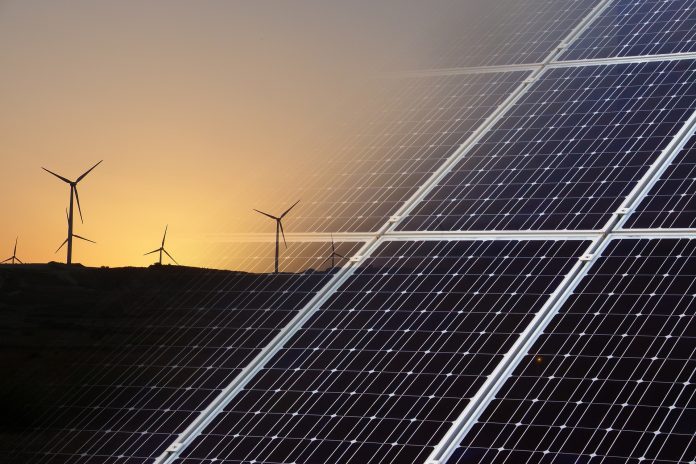China, EU and USA lead the way in renewables despite ongoing decarbonisation challenges, according to new report.
A new study by energy specialists Ember suggests that despite rising demand and continuing high carbon levels in electricity markets, the world’s largest economies will play a big part in reducing global electricity carbon for the first time in 2023.
China remains the highest carbon generator of the big three economies, but had the highest new renewables installations in 2023. Policy shifts in the USA have seen significant decarbonisation progress begin and the European Union continues to generate electricity at much lower carbon rates than other economies.
China – high renewables despite coal dependence
China’s electricity needs continue to grow fast despite the impact of the pandemic and localised lockdowns in 2022. While the level of fossil fuel electricity generation remains high and is similar to the USA, the country has a particularly high carbon mix due to its use of coal.
Unlike the other major economies, coal continues to make up 61% of all electricity generation, though other fossil fuels (gas and oil) make up just 3%. Because of its dependence on coal and its huge energy needs, China made up 38% of the world’s electricity carbon at 4,698 million tonnes of CO2.
China’s electricity production is growing, however, and much of the growth is renewable. Solar and wind make up 14% of all China’s electricity generation and new projects coming on stream amounted to almost half of the world’s new renewable energy last year. The growth of solar and wind power in 2022 reduced coal as a percentage of electricity generation down from 63% a year earlier – something that must continue if it is to decarbonise successfully.
Małgorzata Wiatros-Motyka, senior electricity analyst at Ember, commented: “China is the world’s biggest coal power country but also the leader in absolute wind and solar generation. Choices being made about energy in the country have worldwide implications. Whether peaking fossil generation globally happens in 2023 is largely down to China.”
USA – policy changes beginning to impact
The USA’s electricity sector produced the second highest level of CO2 in 2022, making up 13% of global emissions from electricity generation. Like China, around 60% of this was generated with fossil fuels, but its much lower use of coal resulted in lower levels of carbon.
Only 19% of US electricity is generated from oil, while 39% came from gas burning power plants. That meant its emissions per kilowatt hour were 368gCO2/kWh, well below the global average of 436gCO2/kWh and below China’s 530gCO2/kWh.
The USA has also started to invest heavily in solar and wind power thanks to the impact of the Inflation Reduction Act and the Bipartisan Infrastructure Law. As a result, emissions rose by only 0.3% in 2022 compared to the global average of 1.3% as solar and wind power – along with a replacement of coal-fired electricity generation with gas.
The USA now benefits from around 15% of its energy coming from solar and wind, above the global average of 12% and its improved grid efficiency has also held emissions down relative to rising production. With the federal policies driving much of this change being in their early stages, it is expected this will drive further decarbonisation in the years ahead.
Dave Jones, Ember’s head of data insights, explained: “The deployment of clean power is getting supercharged by the Inflation Reduction Act and Bipartisan Infrastructure Law. But the US still generates 60% of its electricity from fossil fuels, so there is a crucial need for more clean power. Coal power is already falling rapidly and the US will soon see gas power fall rapidly. The US target for 100% clean power by 2035 is certainly within reach.”
European Union – low emissions but a troubled year
The European Union has led the way among the big three economies on reduced carbon electricity, and is responsible for only 6.2% of global electricity emissions. However, its dependence on Russian gas drove significant change in 2022 and droughts and nuclear maintenance issues saw low-cabon hydropower and nuclear power fall.
Only 39% of EU electricity generation is based on fossil fuels, with coal making up 16% and gas making up 20%. Coal saw a small rise in 2022 as the continent moved to reduce its use of gas in light of Russia’s actions. This was partly due to deferred decommissioning of coal plants that will now be shut down in later years.
The EU’s 277gCO2/kWh is far below the power sectors of other major economies and the global average, although this was up slightly on its 266gCO2/kWh in 2021. That rise reflected three big challenges in 2022. The continent used more coal as it adapted to Russia’s invasion of Ukraine, hydropower dropped during severe summer droughts and France took much of its large nuclear power plant fleet offline for maintenance.
Against that backdrop, however, coal rose less fast than many predicted, with solar and wind power making up much of the gap caused by disruption to gas supplies. Those two sectors combined added 74TWh through 2022 and now make up 22% of all electricity generation – almost double the global average.
Sue Brown, Europe programme lead at Ember, said: “Europe had an extremely challenging year in 2022 but should now seize the opportunity to double-down on renewables deployment and remain at the forefront of the global transition to a clean and prosperous economy. Europe must lead by example.”


















